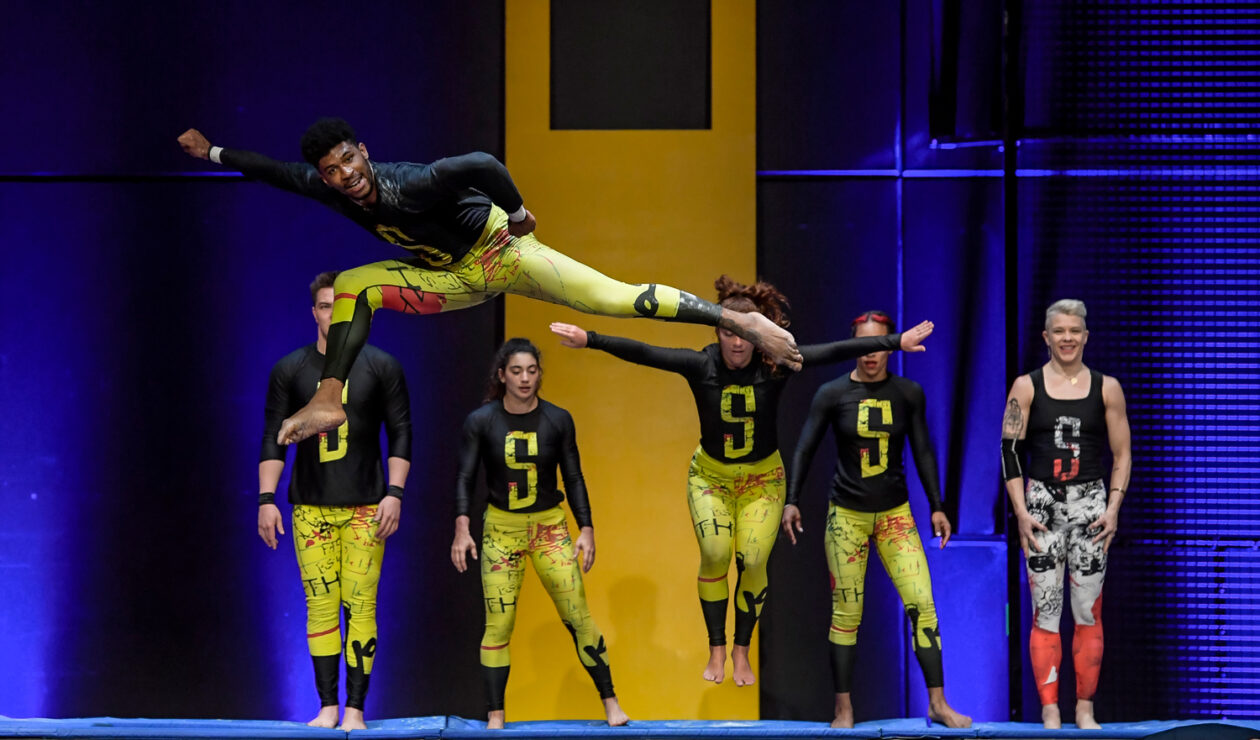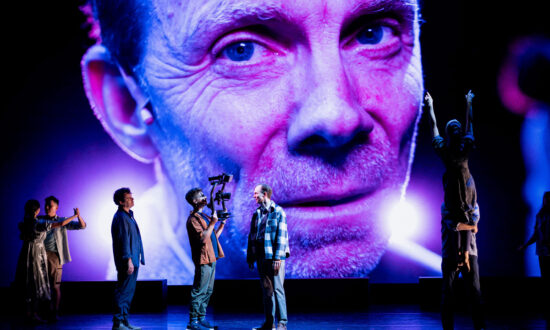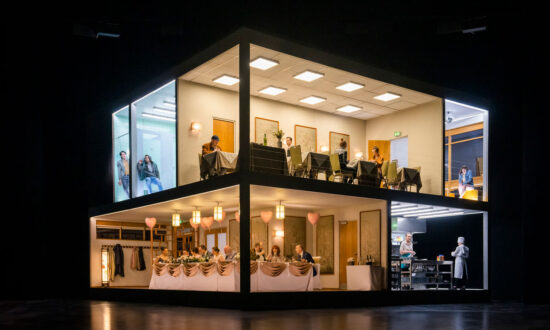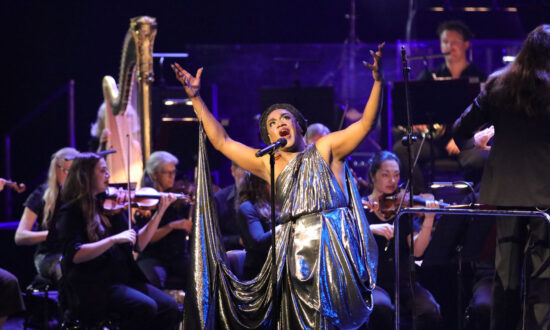“Tip! Go! One, two, three…” Lycra-clad performers, each with a large “S” emblazoned on their chest, balance precariously across the top of a huge metal wedge. As they pose, crouch, scramble and leap on and off, the device rocks from side to side with increasing momentum, propelled by another performer who runs back and forth within the frame like a hamster in a wheel.
It’s a dynamic start to Time Machine, an hour-long review of selected works from the career of Elizabeth Streb, the New York-based artist renowned for experimental dance and grand-scale stunts incorporating giant “action machines”.
STREB EXTREME ACTION, the company founded by Streb in 1985, is said to present a new art form that pushes choreography “beyond dance to defy gravity”. Physics and force are tested to extend the limits of what the human body can achieve. The company is based in the US but has toured the world (Streb’s dancers performed 120 metres in the air on the spokes of the London Eye during the 2012 Olympic Games). The Adelaide Festival season of Time Machine is its first journey to Australia.
Audience members who take their seat early can listen to recordings of Elizabeth Streb describing her creative process and reading snippets of reviews that were published when the shows premiered. This opportunity sets the scene and increases anticipation for what’s to come.
As Streb describes what inspires her, what she notices in her everyday life and how this influences her choreography, we learn that she’s “trying to draw in the air”, finding her chaotic experiments “unbelievably exhilarating”, even though initial explorations often end in failure. She’s focused on evolving new techniques, exploring the “notions of space”.
In many of the pieces, what appeals is the mix of elegance and brute strength. Most sequences highlight the relationship between one or more bodies as they move through the space and connect with some form of material. In between each “trick”, performers shift and assemble equipment, leaving and entering the stage to take their turns as the centre of attention.
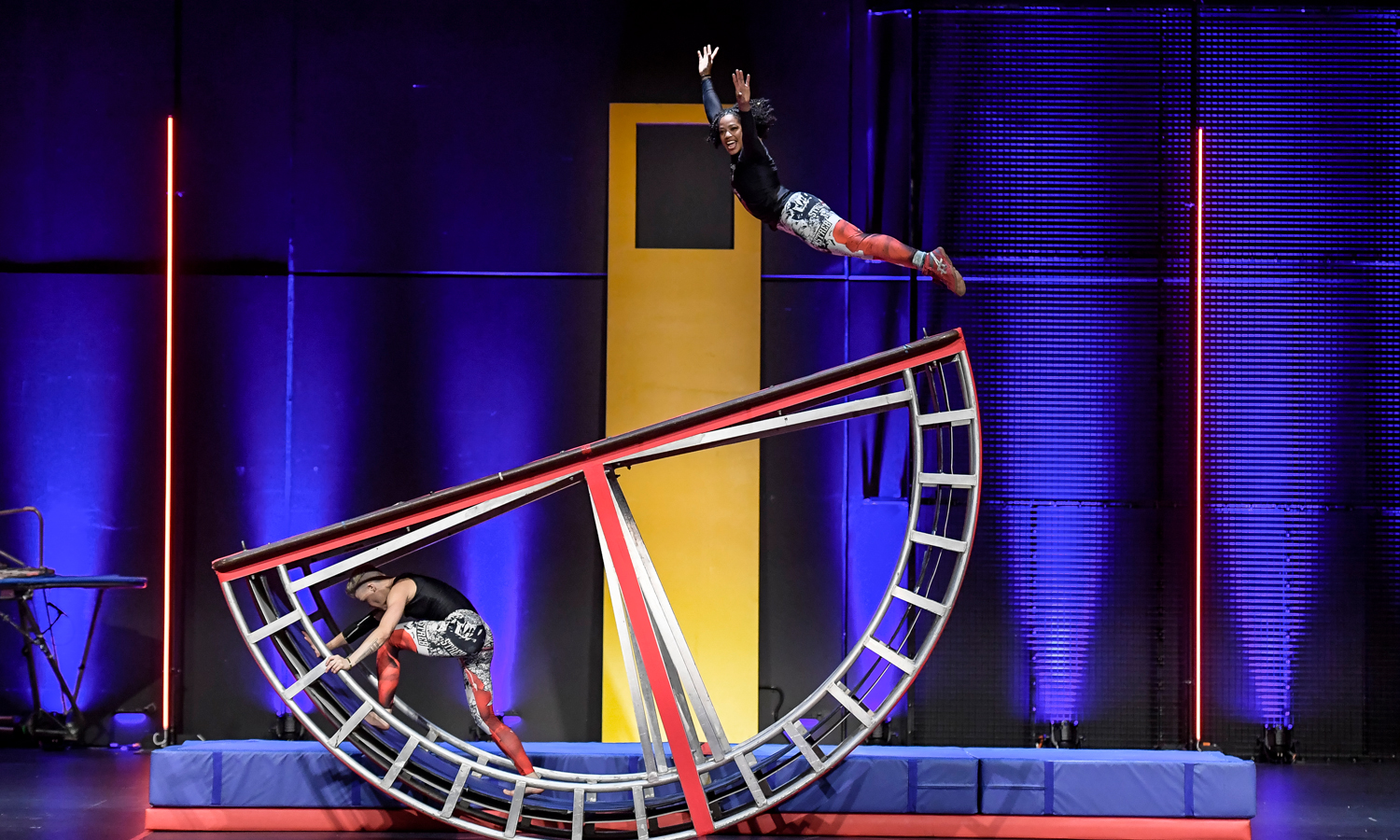
The STREB ensemble perform with giant ‘action machines’. Photo: Roy VanDerVegt
There are solos, too. In one, a dancer contorts herself within the walls of a raised shelf, folding limbs in a series of configurations, pressing her palms and the soles of her feet against the perimeters to suspend herself before falling to the base of the box-like structure. It looks excruciatingly difficult, and there are gasps from the audience at each moment of impact.
Throughout the show, performers grapple with obstacles and each other, frequently diving through the air and crashing to the floor. Every surface of the body is engaged. There are elements of slapstick, echoes of calisthenics and childhood “turns” – daring exploits reminiscent of childhood stunts attempted when parents weren’t looking. Streb refers to her dancers as “action heroes” and it’s not hard to see why.
The nine performers express the physicality of their movements loudly through grunts and shouts, including words of encouragement from the sidelines for whoever is taking the lead. It’s impossible to single out any one dancer, as each gives a superb display of athleticism.
Accompanying the action is a soundscape produced on stage. To emphasise the effort being expended (and what looks like physical punishment being sustained!), booming bass sounds reverberate at the moments of impact via crash mats fitted with microphones. Having the house lights lowered but not completely extinguished also seems to enable a greater connection with the audience.

Get InReview in your inbox – free each Saturday. Local arts and culture – covered.
Thanks for signing up to the InReview newsletter.
Each work utilises one or more objects, including a giant yellow door-like plank, sticks short and long, and large plywood boards. There’s a sense of playfulness and curiosity as well as many moments of glee as the performers “attempt to create magic on ordinary pieces of equipment”.
In “Tie” (each segment has a name), the movements of two performers are enhanced and constrained by a cord that binds them together. It’s funny while also being a display of power as first one person then the other controls the action.
Time Machine revels in risk-taking and does it with panache.
Time Machine is showing at Her Majesty’s Theatre until March 17.
Read InReview‘s interview with Elizabeth Streb here, and see more 2024 Adelaide Festival coverage here.
Support local arts journalism
Your support will help us continue the important work of InReview in publishing free professional journalism that celebrates, interrogates and amplifies arts and culture in South Australia.
Donate Here
